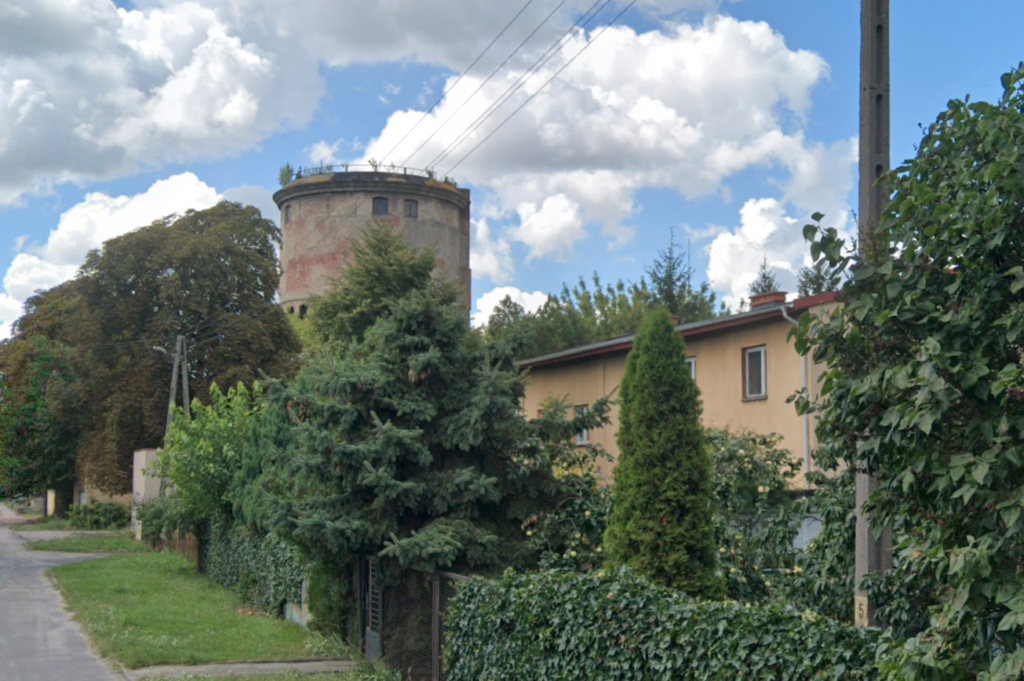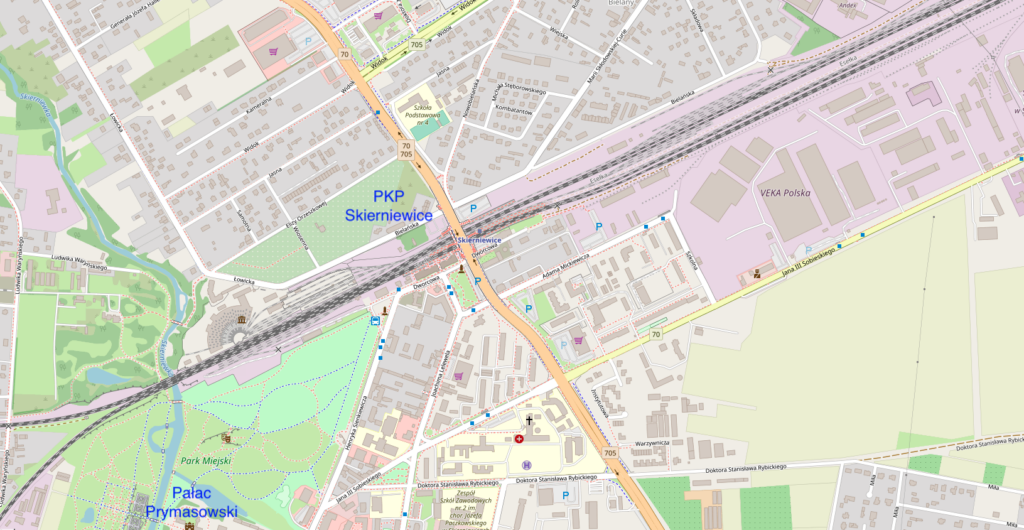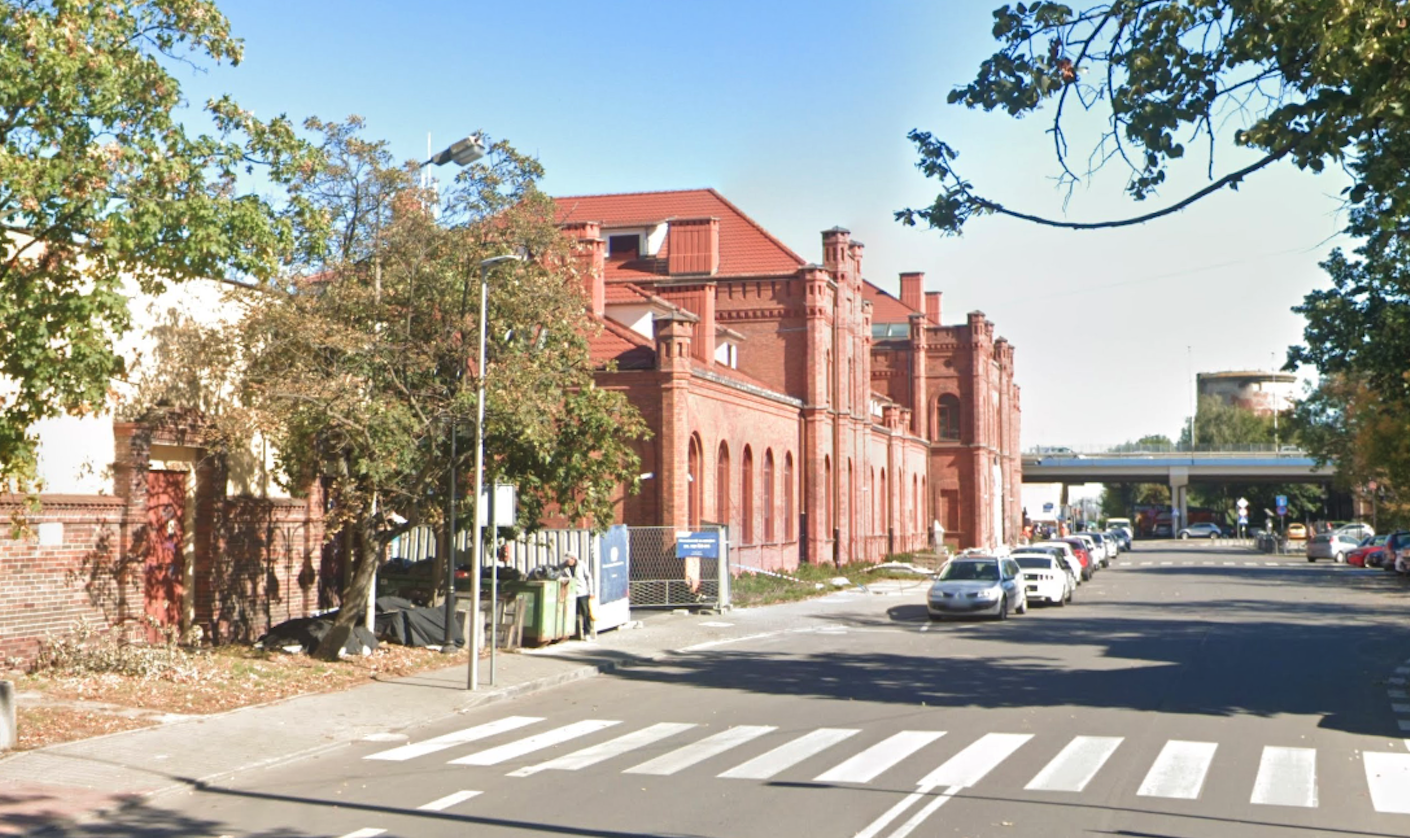Skierniewice 25-11-2025




The town of Skierniewice.
Skierniewice is a town in Poland, in the Łódź Voivodeship, with county rights. The settlement was founded in the 14th century and received city rights on February 19, 1457. The town was the capital of the Skierniewice Voivodeship from 1975 to 1999. The town belongs to the Association of Polish Cities. Currently, the town has an area of 34.60 square kilometers. The population is 44,251 as of 2025. Throughout its history, the settlement was owned by the bishopric. The Archbishop of Gniezno, the Primate of Poland, oversaw Skierniewice. The first written record of Skierniewice dates back to 1359, when the Archbishop of Gniezno visited Skierniewice.
Skierniewice lies on the Łowicko-Błońska Plain, in the Vistula River basin, in the Central Masovian Lowland. Skierniewice lies halfway along the Warsaw-Łódź route. Skierniewice is surrounded by forests. To the north lies the Nieborowski Forest (Bolimów Forest). To the east, south, and west are smaller forest complexes. The Skierniewka River flows through the town, as does the Rawka River, which meets the town in the northeastern part of Skierniewice. Skierniewice is gently undulating, with elevations ranging from 112 to 138 meters.
Skierniewice lies in historic Masovia, in the former Rawa Land, which, since the 15th century, belonged to the Rawa Voivodeship, which was founded in 1462. Skierniewice has never been a densely populated town. In 2012, a disused military training ground, covering 150 hectares, was incorporated into the city. In 2014, an 18.82-hectare area, the village of Miedniewice, on the eastern side, was incorporated into the city. The oldest part of the city is its center, with 19th-century tenement houses. Due to the construction of the Warsaw-Vienna railway line, a railway station was built north of the city center. New housing estates were built for railway workers and their families. Subsequent estates were built during the Second Polish Republic and then during the communist era. The largest housing estate, “Widok,” was built in the 1970s and 1980s. Several apartment blocks, 11-story skyscrapers, and single-family homes were also constructed.
Skierniewice belonged to the Archbishopric of Gniezno, as did Łowicz. Bishops had their seats in all these locations. During this period, all these towns developed similarly and steadily. The foundation charter for Skierniewice was signed by Archbishop Jan Odrowąż of Sprowa on February 19, 1457, in Uniejów. In 1463, the Polish King Casimir IV Jagiellon confirmed Skierniewice’s privileges. In 1559, a school with a high standard of education was established in Skierniewice, whose graduates later studied at the Kraków Academy. In 1610, construction of the Archbishop’s Palace began. This palace hosted the primates of Polish kings and also served as the seat of the archbishop’s courts. During its history, the palace was destroyed by fire but quickly rebuilt. The last primate to hold office in Skierniewice was Ignacy Krasicki.
As a result of the Partition of Poland, the Skierniewice Land fell to the Germanic (Prussian) Partition. The Catholic Church lost its estates, palaces, and schools, which were taken over by the Prussian king. As a result of the Napoleonic Wars, the Skierniewice Land fell under Muscovite rule, all the way to Kalisz. Ostrów Wielkopolski remained within the Germanic borders. The Muscovites established a fictitious state: the Kingdom of Poland, completely dependent on Moscow. In 1867, Skierniewice was granted the status of a district town and incorporated into Rawa County. Additionally, the town was transformed into a garrison town. Barracks, a training ground, and the Church of the Nativity of Christ were built. Two tsarist regiments were stationed here. Skierniewice became a place of recreation for the Muscovites, the tsarist family, and their guests. The surrounding forests were a hunting ground. Emperors sometimes met in Skierniewice; Moscow, Berlin, and Vienna. The Polish occupiers held important talks and made significant decisions here. This did not prevent the outbreak of the Great World War.
The outbreak of the Great War resulted in heavy fighting in the city. The Muscovites withdrew, and the Germans entered the city without a fight. At the end of October 1914, the Muscovites retook the city, but in December 1914, the Germans reoccupied Skierniewice. The front stabilized and lasted until July 1915. During this time, the Germans used poison gas for the first time. In July 1915, the front began to shift eastward.
By 1918, while fighting was still ongoing, the city was taken over by the Polish administration. The first starost in independent Poland was Wacław Maurycy Gajewski. The city was incorporated into the Warsaw Voivodeship.
In 1916, while the war was still ongoing, a power plant was funded. Subsequently, additional production plants were built, including a glassworks, a plywood factory, and others. The Warsaw University of Life Sciences and an experimental horticultural farm were established in Skierniewice. In 1927, President Ignacy Mościcki visited the town.
The Germans entered Skierniewice on September 10, 1939. During the occupation (1939-1945), the forests around Skierniewice were plundered by the Germans on a massive scale. Within six years, the Germans cut down as many trees as Poland planned to harvest in 27 years, in order to plant the same number. This caused extensive damage to the forest stands. In late 1940, the Germans established a ghetto in Skierniewice. Approximately 7,000 prisoners passed through the ghetto. In April 1941, the ghetto was liquidated, and the prisoners were marched on foot to Warsaw. Nearly 1,000 prisoners died during the march. The rest were murdered in German concentration camps. How typical of the Germans. In 1942, in the basement of the town hall, Germans murdered 20 Polish prisoners in retaliation for the derailment of a German military train by Polish partisans. In 1944, at the station, Germans burned a wagon containing the bodies of murdered Poles, at Warsaw’s Pawiak prison. This is the supposedly high Germanic culture. On January 17, 1945, the Red Army entered the city; the 1st Belorussian Front. Fierce fighting raged around the train station.
Shortly after the fighting ended, many Skierniewice residents left for the so-called Recovered Territories. In 1945, the city regained the status of a district town. From 1975 to 1999, the city served as the capital of the voivodeship.
Skierniewice is known worldwide for the Institute of Pomology and Floriculture in Skierniewice. The institute was established in 1951. It was there that renowned Polish apple varieties were developed. In Skierniewice, there is a bench with the figure of Professor Szczepan Pieniążek, the father of Polish fruit growing.
In the 1950s and 1960s, many industrial plants were founded in Skierniewice: the RAWENT Dust Extraction and Ventilation Plant, the ZATRA Radio Works, the POLFER Magnetic Materials Plant, the FUMOS Foundry Equipment Factory, the SARTO Clothing Industry Plant, the Glassworks, and others. Public transportation has been operating in Skierniewice since 1976. The Skierniewice bypass was built in 1982.
Skierniewice Railway.
Geographic coordinates: 51.967N 20.151E. Elevation: 122 m.
The railway station opened in 1845. From the very beginning, it served as a junction. At the Tsar’s behest, a branch line was built to Łowicz, where one of the Tsars’ residences was located, in the former bishop’s palace.
The first station was built in 1846. It was a building constructed in the Moorish style. Its architecture featured many Turkish elements, including the crescent at the top of the central projection. Large windows were divided by pillars. This was known as the Tsar’s Station and was built in 1846, based on a design by Adam Idźkowski. The building housed ticket and baggage claim offices, a restaurant, and service offices. According to some reports, the building was erected near the Imperial Garden, the former bishop’s park. In fact, the building stood several hundred meters to the east, along the tracks. In its design, the architect incorporated elements of Moorish architecture as an important element of the Tsar’s residence complex. It was a monumental, three-part structure with the main hall on the axis. The Moorish style is a style of architecture and art originating from the culture of the Moors – the Muslim inhabitants of North Africa and the Iberian Peninsula. It developed primarily in medieval Spain (Al-Andalus) from the 8th to the 15th centuries, combining Arabic, Berber, and local Spanish-Visigothic elements. In 1870, Prince Alexander Bariatyński became the owner of the Primate’s Palace in Skierniewice. The station building, however, was intended solely for the Tsar, his family, and guests. At the same time, its representative function was emphasized by the addition of a ballroom, theater, and café. After Poland regained independence, the building served various purposes, including as an orphanage and a school. The building burned down in January 1945, and its ruins were demolished.
In 1875, the construction of a new Warsaw-Vienna railway station was completed. The building was built a few hundred meters west of the original station. This station still stands today. It is considered one of the most beautiful railway stations in Poland. The station is a listed monument, listed under number 907, on December 29, 1967. The building was designed by architect Jan Heurich, father of the architect. It is approximately 160 meters long and 12 meters wide. The long façade has 30 axes. The building was constructed of red brick in the Neo-Gothic style, also known as the English Gothic style. The interior was designed in a neoclassical style. The Tsar of Moscow visited the station several times, coming to Skierniewice for hunting trips or continuing his journey to Łowicz. In 1914, the building burned down but was rebuilt. Throughout its history, the station was plastered. During the long period from 1980 to 2024, the building was renovated, removing the plaster from the façade. The station building housed a theater, a community center, and a canteen. During the most recent renovation, the station’s facade and roof on the city side were renovated.
The station is built entirely of light red brick. The walls are adorned with architectural embellishments such as cornices, projections, pillars, and turrets, but without overcrowding. The building is multi-story, some single-story and some two-story. The two-story sections are covered with hipped roofs, while the single-story sections have a gable roof. The roofs feature dormers and skylights (roof windows), making the attic usable. The entire structure is covered with red ceramic tiles. The windows are large and topped with semicircles. The main entrance to the building has three large doors, the upper windows of which are semicircular. The pilasters of the entrance doors are, unusually, white. A large analog clock sits above the entrance, and a large “DWORZEC KOLEJOWY” (RAIL STATION) sign sits atop it. The SKIERNIEWICE sign on the platform side reads SKIERNIEWICE. During the renovation, the main hall’s historic appearance was restored. The bas-reliefs on the walls, ceramic flooring, and ornaments on the walls and ceiling have been recreated. The bas-reliefs are made using the sgraffito technique, which involves scratching off multi-layered plaster in various colors. The building houses a waiting room, ticket offices, restrooms, retail outlets, a confectionary, and a hairdresser. Architectural barriers have been removed. The station also houses Mazovian Railways ticket vending machines.
On November 25, 2003, a commemorative plaque was placed in the station building with the inscription: “In tribute to the builders and employees of the Warsaw-Vienna Railway of 1845. To the cyclists – soldiers who died and were murdered between 1939 and 1945. To the organizers of the station’s reconstruction in 1918, 1945, and 2003. On the 50th anniversary of the junction’s electrification. To the residents of Skierniewice, November 25, 2003.” There are also other commemorative plaques around the station, such as “IN TRIBUTE TO THE HUNGARIAN NATION.”
In 1914, due to the Great War, the station suffered extensive damage. The fan-shaped locomotive shed, water tower, and other railway buildings were completely destroyed. The stone railway bridge over the Skierniewka River was destroyed, but temporarily repaired in 1915. During the Second Polish Republic, the station building was completely rebuilt, and a long platform shelter was built on Platform 1, with a wooden structure and cast-iron pillars, approximately 200 meters long. Around 1925, a new water tower, identical to the one in Koluszki, was built. The tower was constructed by Żelazo – Beton Spółka zoo.
The electrification of the Skierniewice junction took place in 1963.
The locomotive shed is located in the western part of the station near the Skierniewka (Łupina) River. The fan-shaped shed has 21 stations and a turntable. The turntable is unusual in that it is asymmetrical. The axis of rotation is closer to one end. The turntable cannot be rotated 360 degrees, due to the close proximity of the main tracks. Currently, the shed is not used by PKP (Polish State Railways) and may be converted into an open-air museum: the Polish Association of Railway Enthusiasts – Locomotive Shed.
The first freight section of the station, located between the locomotive shed and the station building, is currently unused. It consists of storage buildings, a ramp, a marshalling yard, and six tracks. The tracks are occupied by former freight wagons and steam locomotives. The Skierniewice Local Control Center (LCS) is located in the western part of the station. The second freight section of the station is located in the eastern part of the station. There are eight tracks in use here, and a large loading yard is located nearby.
A railway administration building was constructed east of the station building. It is located between the tracks and the water tower. It also housed a medical clinic.
A statue of Stanisław Wokulski, one of the characters in Bolesław Prus’s novel “The Doll,” was erected on Platform 1. The platforms were last renovated between 2007 and 2009. The platforms were raised, and new canopies and small-scale architecture were added.
Around 1970, a road viaduct carrying National Road No. 70 was built above the station. The viaduct facilitated public transport and eliminated the dangerous rail-road crossing between Bielańska and Sienkiewicza Streets. Stairs led from the viaduct to the station platforms. On May 23, 2022, the viaduct reopened after a major renovation. A separate pedestrian bridge was constructed, and elevators were installed for disabled passengers, passengers with large luggage, and cyclists.
The station currently has three platforms and four platform edges. Platform 1 is track 2. Platform 2 is tracks 1 and 3. Platform 3 is track 104. The platforms have been renovated. Elevators for disabled passengers and passengers with large luggage and bicycles have been installed. A modern passenger information system, the Central Dynamic Passenger Information System, has been launched. In 2024, the station served 4,684,800 passengers. On November 22, 2025, 121 passenger trains departed from Skierniewice station. The following stations were available: Białystok, Gdynia Główna, Giżycko, Kołobrzeg, Kutno, Łowicz Główny, Łódź Fabryczna, Łódź Kaliska, Olsztyn Główny, Poznań Główny, Szklarska Poręba Górna, Terespol, Warsaw Central, Warsaw Wschodnia, Wrocław Główny, and Zgorzelec. There is a bus station near the train station. There are several parking lots for passenger cars nearby. The T-34/85 tank stands in the square on Sienkiewicza Street, a memorial to the battles of World War II.
Railway lines:
Line No. 1 Warsaw West – Katowice is electrified, fully double-track, and 316.066 km long. Between 1845 and 1847, the Warsaw West – Dąbrowa Górnicza Ząbkowice section (Warsaw-Vienna Railway) was opened, and in 1859, the Dąbrowa Górnicza Ząbkowice – Katowice section was opened.
Line No. 11 Skierniewice – Łowicz Główny is electrified, fully double-track, and 21.713 km long. This line connects railway line No. 1 Warszawa Zachodnia – Katowice with railway line No. 3 Warszawa Zachodnia – Kunowice and railway line No. 15 Bednary – Łódź Kaliska (via the Łowicz Główny ŁG1 – Łowicz Przedmieście and Łowicz Główny – Łowicz Przedmieście railway links), as well as railway line No. 12 Skierniewice – Łuków. It runs parallel to national road No. 70. The railway line was opened on November 1, 1845, for the Warsaw-Vienna Railway. On May 25, 1963, the railway line was electrified and a second track was added.
LK No. 12 Skierniewice – Łuków, the Warsaw Freight Bypass, is electrified and fully double-tracked. The line is 161.567 km long and connects Skierniewice station with Łuków station. The line is popularly known as “S-Ł” or “esełka”. Line No. 12 runs through the Łódź Voivodeship, Masovian Voivodeship and Lublin Voivodeship; it is a line of national and international importance, belonging to the AGTC network of international combined transport lines, as a transport corridor of line C-E 20. Currently, the line is used almost exclusively for freight traffic, as the southern bypass of the Warsaw Railway Junction.
Line No. 529 is a first-class, electrified, single-track line of national significance, connecting turnout No. 3 with turnout No. 310 at Skierniewice station. The line is 1.267 km long.
Written by Karol Placha Hetman
